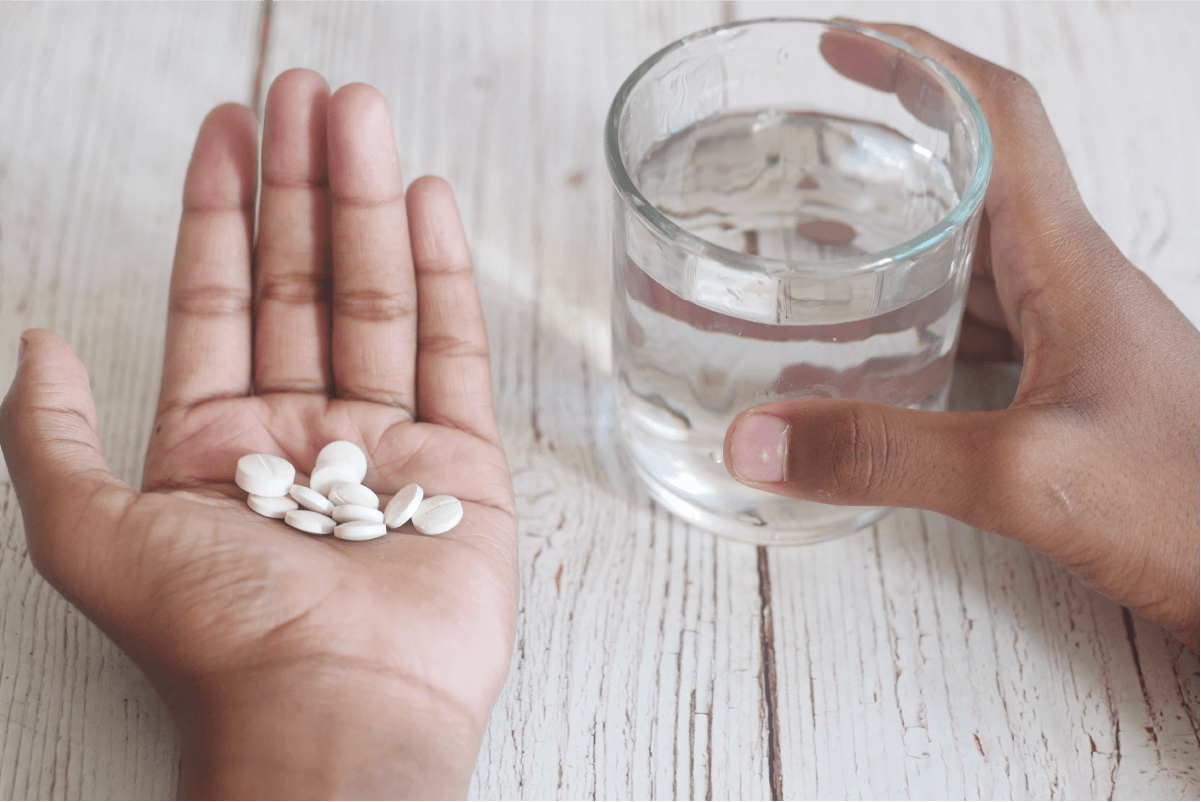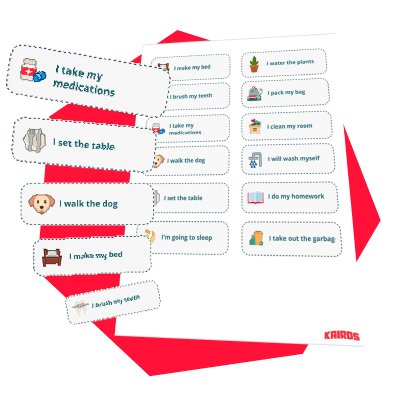Mental health conditions can be hard to understand, even for medical researchers. Mental health professionals have been studying the condition known as ADHD since the 1980s. In that time, much progress has been made to comprehend the mental processes behind ADHD and to clear misconceptions about neurodevelopmental disorders.
According to research published by the Journal of Global Health, approximately 1 in 20 people show symptoms that correlate with a diagnosis of ADHD (source). Thanks to the widespread awareness of the condition, more people than ever before have access to information, support and free resources to live happily with ADHD.
Are ADHD and ADD the same thing?
Attention-Deficit Hyperactivity Disorder (ADHD) and Attention-Deficit Disorder (ADD) both refer to the same condition. However, the term ADD has fallen in favor as mental health professionals agree that ADHD better describes the difference in cognition.
Why is ADD not used anymore?
When the condition that would later be known as ADHD was first documented, it was separated into two different categories: ADD with or without hyperactivity. As research further developed, understanding of the condition grew and it was agreed that the hyperactivity symptoms were prevalent enough to name it ADHD.
ADD vs. ADHD: what's the difference?
Mental health professionals agree that all attention deficit conditions should be recognized by the term ADHD, including what was previously known as ADD. The subtype of ADHD that once was ADD is now known as predominantly inattentive type ADHD.
Why was the name changed?
ADHD is a complex condition, and doctors’ understanding of it has changed over the last 40 years. For most of the 20th century, children who displayed symptoms of ADHD were dismissed as misbehaved or unruly.
It wasn’t until 1980 that the condition was officially recognized by the American Psychiatric Association. At that time, the link between attention deficit and hyperactivity was not clearly understood so the condition was named Attention-Deficit Disorder (ADD). Symptoms of ADD often included hyperactivity, so the condition was divided into two subtypes:
- Attention-Deficit Disorder with hyperactivity
- Attention-Deficit Disorder without hyperactivity
The official name of ADHD was given in 1987, in a revised version of the third edition of the Diagnostic and Statistical Manual of Mental Disorders (DSM-III). The DSM is the standard guideline for doctors and mental health professionals published by the American Psychiatric Association. By the time, the term ADD had already caught on, so usage of it has remained on the mainstream.
The fifth and current version of the DSM recognizes three subtypes of ADHD. The DSM-5 takes into account how ADHD presents itself in both children and adults, which allows for a clearer understanding of the condition as children mature.
The three subtypes of ADHD currently recognized are:
- Attention-Deficit/Hyperactivity Disorder, predominantly inattentive presentation
- Attention-Deficit/Hyperactivity Disorder, predominantly hyperactive-impulsive presentation
- Attention-Deficit/Hyperactivity Disorder, combined presentation
Usage of the terms ADHD and ADD
ADHD and ADD are used interchangeably by several people. It is safe to say that whether you use ADHD or ADD, most people will understand what condition you’re referring to. Some doctors, clinicians, and medical journalists still use the term ADD to refer to inattentive type ADHD. Professional consensus, however, dictates that the official name of the condition is ADHD.
ADHD predominantly inattentive presentation

People who show primarily symptoms of inattention tend not to have hyperactivity too present in their behavior. Children with predominantly inattentive type ADHD may appear as shy or lost in their own world. This variant of the condition was previously known by the term ADD (source). This subtype of ADHD is more prevalent in girls than in boys.
Due to its similarity to common daydreaming, a child may live for many years with undiagnosed ADHD. A child with predominantly inattentive type ADHD may show the following symptoms:
- Difficulty paying attention
- Avoiding tasks that are long or require mental effort
- Difficulty concentrating at school, home, or even when performing a leisure activity
- Being disorganized
- Often losing things and making careless mistakes
- Appearing not to pay attention when spoken to
- Easily missing details
- Having problems following instructions
- Being forgetful
ADHD predominantly hyperactive-impulsive presentation

Children who show hyperactive-impulsive ADHD symptoms tend to have vast amounts of energy, which makes them seem restless. As this subtype of ADHD is easier to identify, a diagnosis of hyperactive-impulsive type ADHD is generally simpler than its inattentive type counterpart.
Symptoms of hyperactivity that a child with ADHD may show are:
- Hastily answering a question before it has been finished
- Interrupting other people’s speech
- Having trouble waiting for their turn
- Talking too much
- Fidgety and squirmy behavior, like constantly tapping their foot or playing with their hands
- Being unable to sit still, even during class or when eating
- Running, climbing, and being loud, even when it’s inappropriate
- Acting without thinking about the consequences of their actions and similar impulsive behaviors
ADHD combined presentation
It is possible that someone develops a combination of both inattentive and hyperactive-impulsive symptoms. If a child shows more than 6 symptoms of each subtype, then they have a combined type ADHD.
Research shows that children who develop combined type ADHD can benefit from support and treatment the same way kids with the other subtypes do. In fact, behavioral approaches and interventions are extremely effective in improving the lifestyles of children and teenagers with all types of ADHD (source).
How is ADHD diagnosed?

A specialist can accurately diagnose ADHD in a child after a detailed assessment that includes interviews with the child and people close to them, such as their parents and teachers. A physical examination is also performed, to rule out other causes for ADHD-like symptoms.
While a general practitioner is not able to formally diagnose ADHD, they may be able to recognize it and discuss any concerns you may have about the condition. Your child’s teachers and other guardians may also provide valuable information to better comprehend patterns in their behavior.
You can expect a general practitioner to ask the following questions concerning your child’s diagnosis of ADHD:
- Questions about the symptoms presented by your child
- Questions about when the symptoms started
- The places where the symptoms are noticed, be it at school, home, or during play
- If the symptoms are affecting your child’s daily life or academic performance
- If there have been any recent tragic events, such as the death of a loved one, that may have affected the child psychologically
- If your child shows symptoms of other health conditions similar to ADHD
- If there is a family history of ADHD
ADHD is not diagnosed right away after a child demonstrates symptoms. Doctors prefer to periodically observe the child’s development for some months to rule out ADHD symptoms being confused with normal infant behavior. If you believe your child has ADHD, then the best course of action is to speak to your doctor.
How is ADHD treated?
Even if the root causes of ADHD are not well understood, mental health professionals have devised effective treatments to guarantee that children with ADHD grow up healthy and happy. Treatment of children with ADHD is primarily based on behavioral therapies and receiving support from loved ones.
Treating ADHD with medicine

Treating ADHD with medicine is not like taking a pill to drive a headache away. It is important to understand that ADHD is not something you get rid of, but a difference in the way someone experiences their environment (source). Medicine designed for ADHD is therefore not meant to treat the condition itself, but to make it easier for a patient to improve his organizational skills and remain calm.
Medicine is not necessary for the treatment of ADHD, but it can help a child concentrate and be less impulsive. Pharmaceutical treatment of ADHD is a very sensitive matter, and measures must be taken to guarantee the safe use of medicines. Doctors who prescribe medicines for ADHD begin doing so in small doses, and periodic breaks from drug intake must often be taken to observe changes relevant to the development of the child.
If you or your child take medication for ADHD, make sure to let your doctor know about any perceived side effects. If there is any problem with the medication, then the dosage or the drug itself might need to be changed. Common side effects of ADHD medication include trouble sleeping, headaches, stomach aches, and an irritable mood.
Treating ADHD with therapy
Therapy is very effective in dealing not only with ADHD but also with additional problems that are often associated with the condition, such as mood disorders and feelings of anxiety. A psychoeducational approach to therapy will motivate your child to openly discuss his ADHD and what effect it has in his life. Many people find it easier to cope with their condition after being able to identify the ways it affects them.
Behavioral therapies are also extremely fruitful when dealing with ADHD for both children and adults. Parents and teachers are encouraged to participate in the management of children’s ADHD by looking for and rewarding positive behavior, as well as by learning more about the condition and structuring activities to teach them organizational skills.
Routines for children to try at home
Resources for children with ADHD
One of the best ways for kids with ADHD to learn how to be organized and independent is by adopting a clear daily routine. Parents interested in providing their children with a fun way of learning to be autonomous can take advantage of the Kairos Game app.
Kairos tasks your child with defending the world from evil aliens. To achieve that goal, children must complete a series of assignments, such as brushing their teeth, doing their homework, and cleaning their room. As they progress through the game, children are rewarded with cool superpowers and cosmetic options for their in-game avatars.
Parents can customize tasks in the app to accommodate their children’s particular schedules. A built-in virtual coach can help parents manage their kids’ routines, screen time, bedtime, and much more. The app even offers parents advice on how to encourage their kids’ good behavior and other positive parenting recommendations. Kairos is free to download on the Google Play and Apple App Store platforms.
